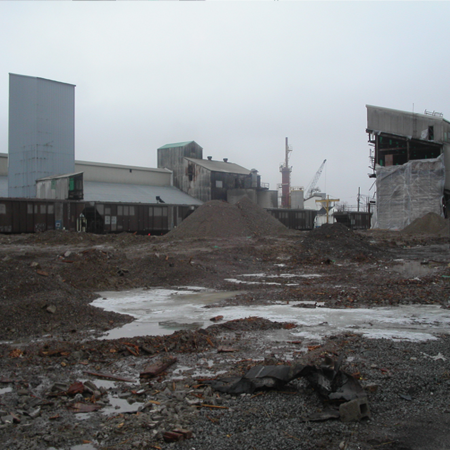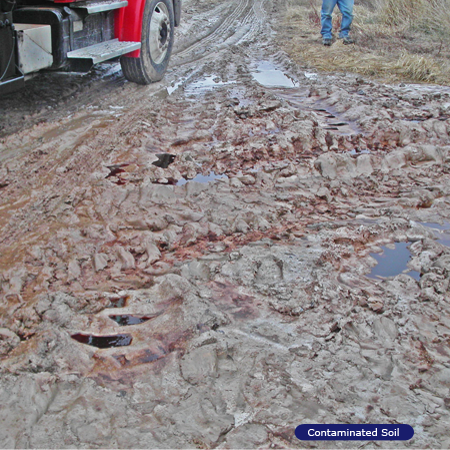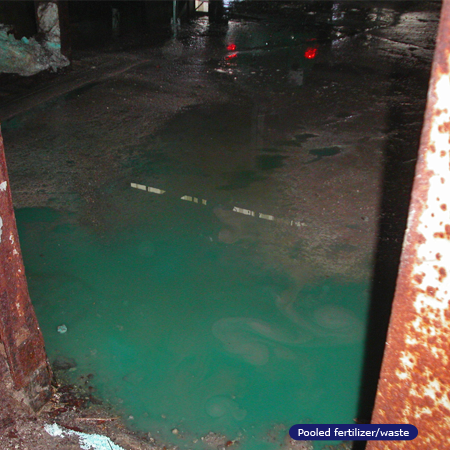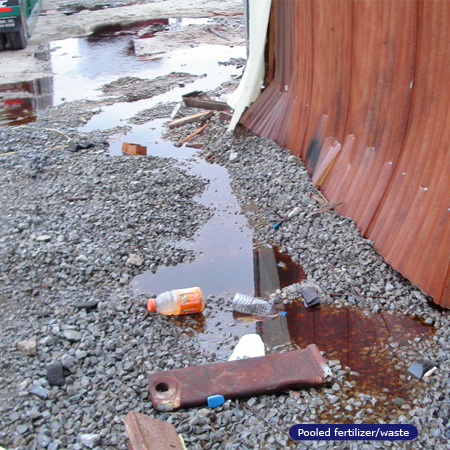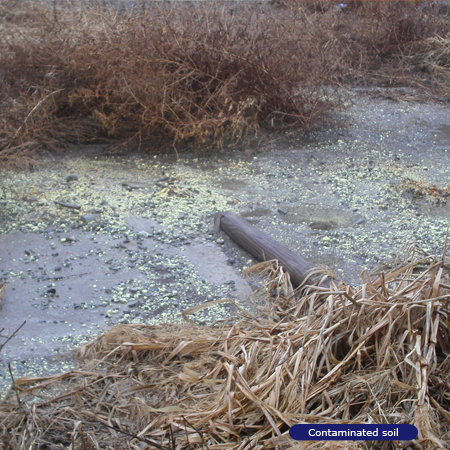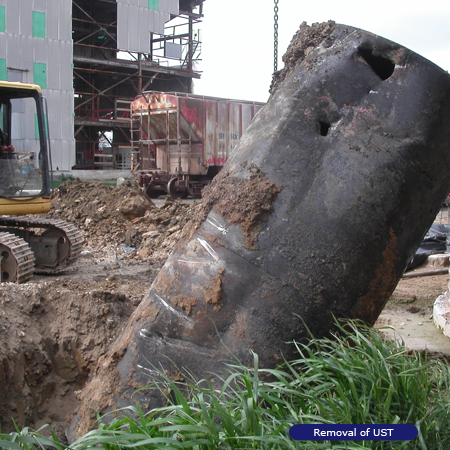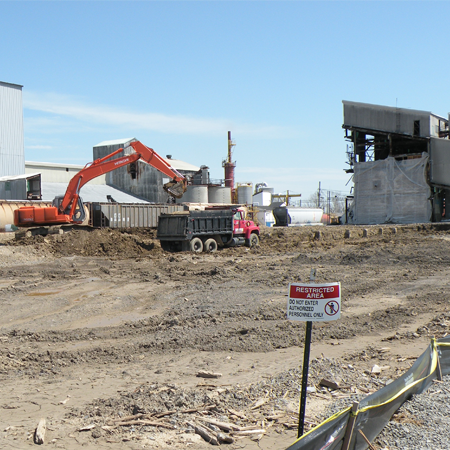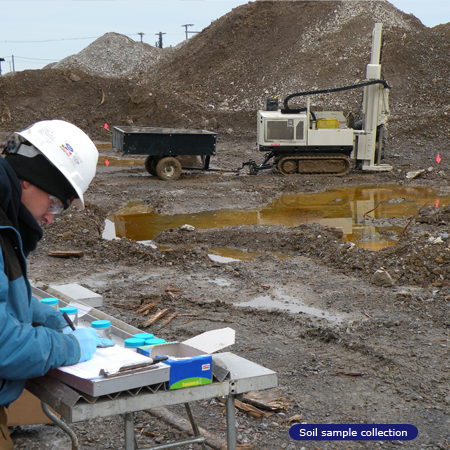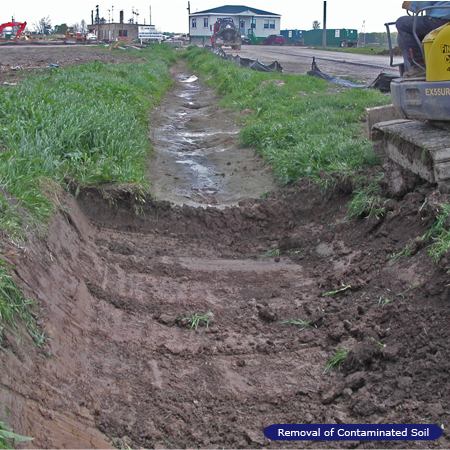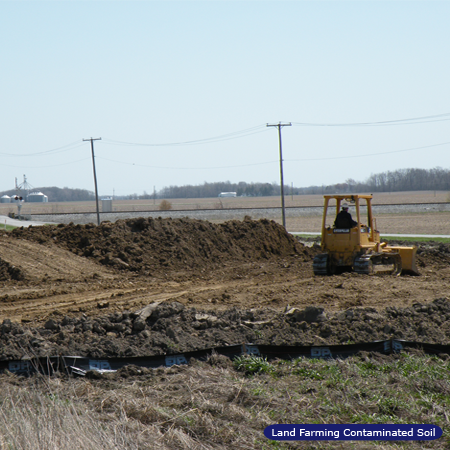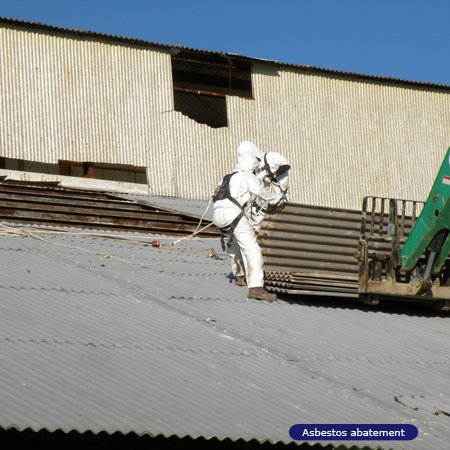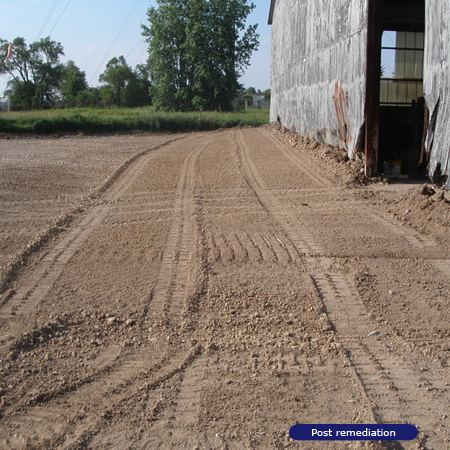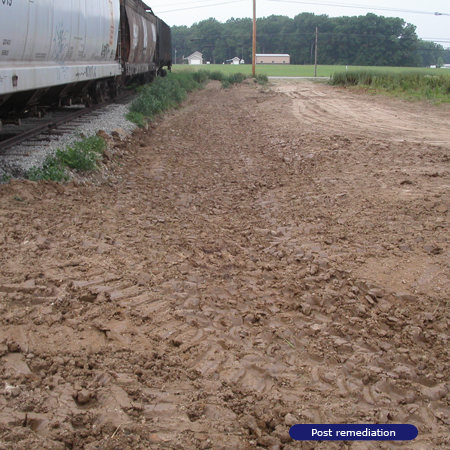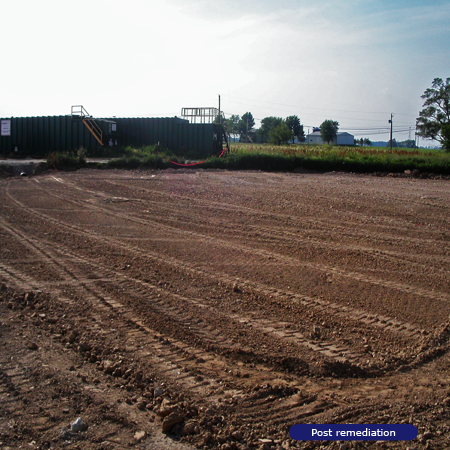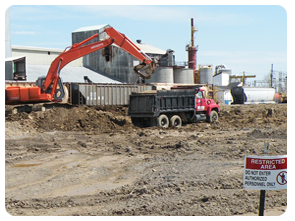
Cairo, Ohio - Spill Response & Remediation
Date Completed: June 5, 2012
Category: general
Location: Cairo, OH
Former Ag Chemical Facility
At the request of Ohio EPA - Division of Emergency Response and Remediation, Allied responded to a reported release of ammonia from an agricultural chemical manufacturing facility. Initial investigation by OEPA identified significantly elevated concentrations of ammonia in an adjoining stream.
On December 2, 2008, the Ohio Environmental Protection Agency (Ohio EPA) documented a drainage trench, flowing from the facility, discharging a dark brown liquid. Field-testing (by Ohio EPA) showed the dark brown liquid contained elevated ammonia-nitrogen (ammonia-N). Assessment of the discharge indicated ammonia-N concentrations as high as 3,600 mg/L. Per USEPA, the maximum default criteria for ammonia-N at this location was established at 13 mg/L. Ammonia is classified as a hazardous substance under the Comprehensive Environmental Response, Compensation, and Liability Act of 1980 (CERCLA), Section 101 (14). Based on this data, USEPA concluded that a response action addressing conditions at the Site to protect the public health, welfare or the environment was warranted.
At the time of response action, the Subject Site consisted of a 27.47-acre parcel of land occupied by a railcar repair facility north of Cairo, Ohio. Investigation of the property operating history determined that fertilizer manufacturing and blending operations had been conducted at the facility format least 1955 to circa 2005. Allied commenced with emergency response actions on December 3, 2008. Initial response actions included:
- Installation of earthen dams in three on-Site drainage ditches to prevent the release of ammonia-N impacted surface water.
- Excavation of site drainage ditches to increase storm water holding capacity.
- Vacuum removal of retained surface water within on-Site ditches and plugging of storm sewer catch basins.
Collection of additional surface water samples on- and off-Site to characterize the initial condition of on-Site surface water, down-gradient surface water, and up-gradient surface water.
Following initial response actions to control the discharge of contaminated surface water, Allied Environmental Services (AES) conducted a site investigation over the period from December 10 to December 15, 2008. The initial site investigation included the advancement and sampling of 41 soil borings and identified ten (10) potential source areas for ammonia-N. These source areas included large quantities of bulk dry fertilizer remaining on the Site, as well as large areas of contaminated soil. It was determined that approximately 4 acres of the 27-acre site was ammonia-contaminated. In addition, significant areas of asbestos-contaminated soil were identified at the property. The asbestos contamination was the result of improper demolition of former site structures.
Based on the results of the site investigation, Allied developed a Site-Specific Remedial Action Plan (SSRAP) and Work Plan, which was approved by EPA Region 5. The Remedial Action Plan included the removal and off-site disposal of grossly contaminated soils/debris, off-site disposal of contaminated water, and on-site landfarming of soils containing lesser quantities of ammonia. The following materials were transported off-site for disposal:
- 616 tons of bulk fertilizer and grossly contaminated soil;
- 8,500 cubic yards of ammonia-contaminated soil;
- 28 tons of contaminated pit sludge;
- 4,500 tons of asbestos-contaminated soil/debris;
- 50 cubic yards of ammonia-contaminated lumber/construction debris;
- 3,650,000 gallons of contaminated surface water.
In addition, approximately 8,500 cubic yards of soil was treated by landfarming in a designated on-Site engineered treatment area. The basic mechanism through which landfarming works for treatment of ammonia-N impacted soil is through volatilization of the ammonia from the soil. The secondary mechanism is the evapotranspiration of moisture from the soil. Moisture within the soil evaporates and conveys ammonia away from the soil matrix. At the Subject Site, the soil matrix was mixed (plowed) periodically to facilitate the treatment process. Landfarming is currently underway at this site and will continue for an estimated 24 months, or until acceptable concentrations of ammonia-N are achieved.
To complete this project, Allied contained the initial release of ammonia-N, and designed and implemented an effective remediation strategy for over 4 acres of impacted soil. Allied also successfully removed/closed an underground fuel storage tank at the Site.
For additional information on this spill response and remediation project, please visit EPA On Scene Coordinator Website.
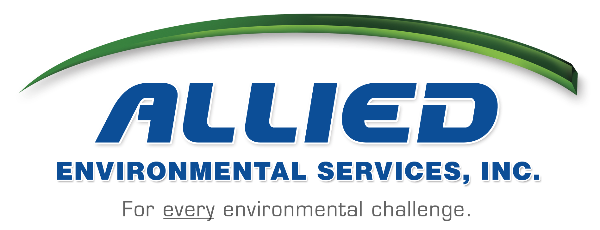
Corporate Headquarters
585 Liberty Commons Pkwy.
Lima, Ohio 45804
Phone: (419) 227-4004
Toll Free: (800) 992-5781
